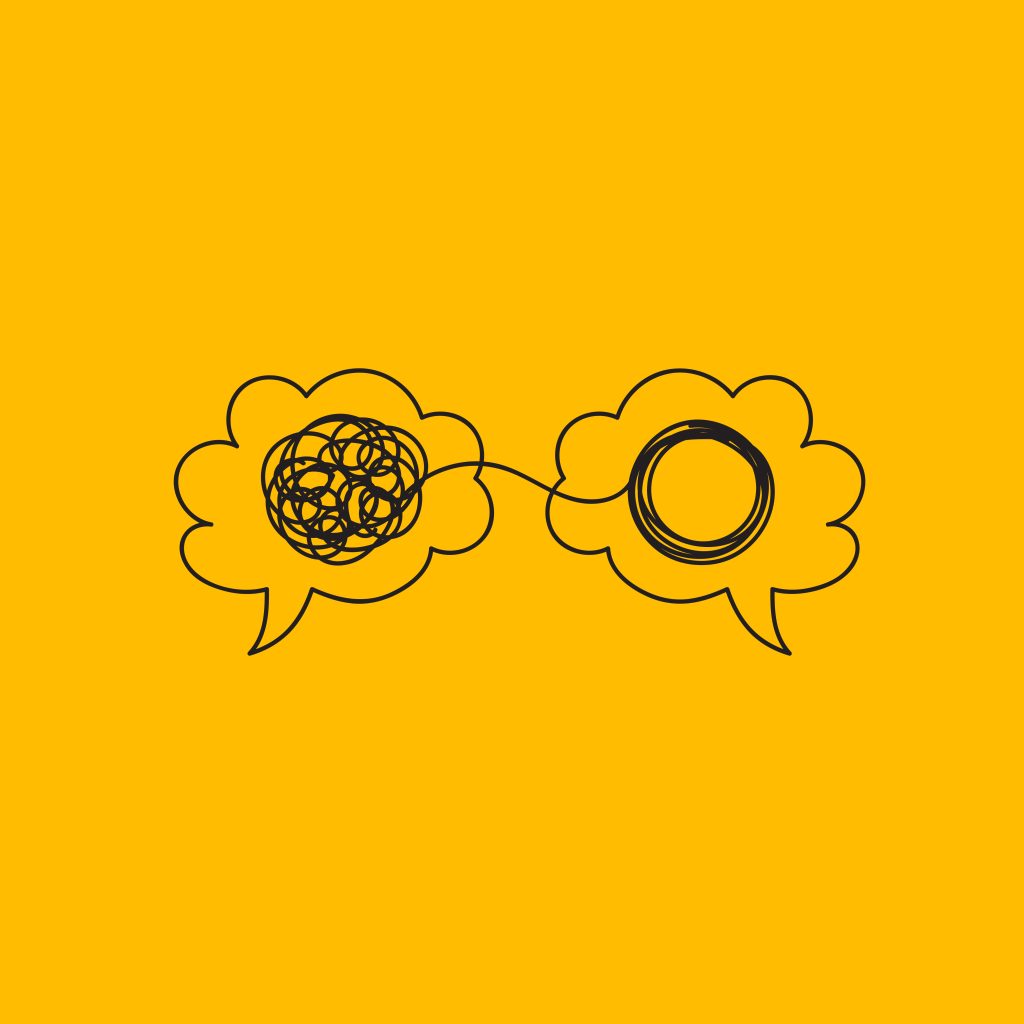

Unclear, overly complex, or specialized language use can impede communication in a variety of societal contexts. It can limit accessibility to critically important government programs through cumbersome, confusing applications for public benefits. It can hinder the public’s comprehension of healthcare communications and legally binding agreements. Within public school systems, dense or difficult to parse language can prevent stakeholders, including parents and caregivers, from understanding services they are entitled to, regulations affecting them or their children, and other types of important information. In those contexts, unduly complex language can be intimidating and unwelcoming and thus can operate as a gatekeeping measure.
Dense, specialized, or complex language is often seen as an immutable discourse feature of a particular register or discipline. Believing this leads to user-deficient thinking—if a user cannot understand the communication, that indicates a deficiency in the user, not the communication. The burden is on the user to find a way to understanding, which sometimes requires hiring someone with specialized knowledge to interpret the communication and guide the user through the process. The assumption that certain registers of language are inherently confusing is easily exploited when language is used to intentionally obfuscate meaning. This is particularly true of language used in ballot measures and consumer disclosures regarding cancellation and renewal policies (see Hvasta, 2020; Traupman Berge, Rothman, and Rothermel, 2020).
Within the educational context there are policies and regulations that schools are required to communicate to stakeholders. Often, these informational disclosures contain specialized language and structures common in legal writing that can be difficult to understand without specialized knowledge. Considering the number of stakeholders within the school system who speak languages other than English, these communications can be even less comprehensible. While many schools translate these documents into multiple languages, they typically remain as complex and specialized. Communication can be clear and accessible regardless of the register or genre. It should be intelligible, relevant, and usable without requiring specialized knowledge or training. In this sense, plain language is a civil right.
What Is Plain Language?
The term plain language refers to language that is clear and easy to understand. However, the concept “clear and easy to understand” is not easily operationalized and is often defined by the creator’s beliefs, including their assumptions about the target user. What constitutes “clear and easy to understand“ can only be defined by the user of that communication. It is informed by the user’s background and experience, which can make defining plain language as a concept and a term difficult. Plain language is shorthand for a host of concepts, including simplified language, power relationships revealed through language, how sociocultural ideology is realized in language, and factors in communication that are not fully realized through lexico-grammatical choices—design, layout, and ease of use, to name a few.
Though a decade has passed since the Plain Writing Act of 2010 required federal agencies to write clear government communication that the public can understand and use, advocacy for plain language in all sectors (and many countries) persists (e.g., the Center for Plain Language, Plain Language Association International). In the U.S., federal agencies adopted the federal plain language guidelines to create clear, accessible communication for the public. However, that practice in isolation does not adequately address social justice concerns implicated in public communications across all government and nongovernmental discourse. Communication that flows one way from the creators of the communication to the users of the communication is not sufficient (even if plain language guidelines are followed) because what constitutes plain language (clear and easy to understand) must be defined by the user.

While applying plain language guidelines can increase readability and comprehension, larger issues of systemic oppression can remain. Jones and Williams’s (2017) study of plain language in three disclosure statements in mortgage documents revealed that although plain language guidelines were followed, the documents’ accessibility to homebuyers varied because of the way information was foregrounded, backgrounded, or omitted—three concepts important to critical discourse analysis. The researchers echo Walton’s (2016) call to consider the user while applying plain language guidelines with a “critical focus on amplifying agency and reducing inequity” (p. 428).
In a study of antidiscrimination laws in post-apartheid South Africa, Cornelius (2010) assessed whether a booklet using plain language to create a simplified version of the Promotion of Equality and Prevention of Unfair Discrimination Act was accessible to “non-mother tongue speakers with no formal training in, and limited knowledge of, the law” (p. 171). In her findings, Cornelius noted that for the people the law was designed to protect, the booklet was no more comprehensible nor accessible than the original act.
This method of intralingual translation (Bhatia, 1983) created a problematic relationship between the text (in this case the law) and the user. The original text of the law remained, while the additional booklet version was created to accommodate the “deficient” user who could not access the law as written (though the law was written for their protection).
By assuming that dense, specialized language used in public-facing communication is acceptable, we adopt a user-deficient perspective. This puts the onus on the user to change, rather than the language of the communication, and takes power and agency out of the hands of the user. We can shift that power to the user by changing this assumption—if the user cannot understand or effectively use the communication, then the communication must change. Shifting this perspective creates a collaboration between the creator and the user and involves the user in an iterative process of creation, giving value to the user’s experience and voice.
Considering this shift within the context of the educational system shows the power of enacting a change in perspective. Many schools actively work to reach their stakeholders and make them feel welcomed and valued, particularly parents and caregivers. But when parents and caregivers feel alienated by communication they receive, this works against inclusion efforts. If schools reach out to a representative group of stakeholders to evaluate the clarity and comprehensibility of communication and include them in the process, they shift the power balance, and that helps create equity and a deeper sense of inclusion.
Clear Communication: A Dynamic Approach
Because critical discourse analysis is interested in getting beneath the surface features of discourse to uncover how discursive practices construct and maintain social inequities and power differentials, it has a lot to offer in the analysis of clear communication. The applied linguistics framework (Gibbons, 2001) of reflection, action, and evaluation can be combined with principles of critical discourse analysis to address unclear and complex communication in a way that centers on the needs and experiences of the user to improve access and equity. Reflection requires a critical inquiry into the document and the users, seeking out user experience and identifying language that reinforces oppressive ideology. The next stage, action, involves changing the document based on the reflection. In the action stage, we can apply plain language guidelines in alignment with feedback and data collected from the users. Action works in conjunction with evaluation as an iterative process moving between user feedback and revision. At each stage, the clarity and effectiveness of the communication must be evaluated by a representative group of users. Small-scale testing is not only appropriate and effective but also inexpensive and relatively simple (Stephens, 2010). At the reflection stage, focus group discussions and interviews with five or more users are great ways to gather background information on users’ experiences and how they will use the final communication.
At the action stage, cloze testing and paraphrase testing with draft material are effective ways of determining how well users can understand the communication. Once a final draft is ready, giving users a specific task to accomplish by using information in the communication can demonstrate whether the communication is clear and easy to use.

This dynamic, iterative process has proven successful in government communication to citizens in the municipality of The Hague, Netherlands, particularly during the COVID-19 pandemic. The city established a test panel of citizens representing the diverse linguistic and cultural backgrounds of the population and collaborated with them on every communication concept. The content creators then used the feedback from this panel to revise documents and infographics to be certain crucial information was communicated clearly. The approach has been so successful that The Hague has developed a tool on their website to elicit feedback from all users and plans to keep these practices in place post-pandemic (van Noort, 2021).
Though at first glance this process may seem onerous and time-consuming, it is a small effort to put in for increased equity and access to information. Within a school system, the benefits of reaching stakeholders and valuing their voices and input can have a ripple effect into many areas of school culture. This is not just a shift in language use; it is a shift in perspective. Changing communication can start small. Choose one informational document intended for parents and caregivers. Meet with a small but representative group and ask them about their backgrounds and their needs, and find out how well they can understand and use the information given to them. Then use their feedback to revise the document. Follow a plain language checklist, such as the one provided at www.plainlanguage.gov/resources/checklists/checklist. Check in with a user group again. Remove every fifth word from the document and see if the group can supply the missing words correctly. With a complete draft, meet with one or two users and ask them to complete a task using information in the document. This process will become easier and more efficient each time. Consider implementing a method for stakeholders to provide feedback on the comprehensibility and usability of communication they receive. This could be a brief survey or a simple questionnaire always available on the school website.
As research and prior efforts have shown, ameliorating social justice issues perpetuated by unclear communication is an iterative process, and the problems cannot be remedied with a one-size-fits-all approach. The more writers and creators of communication collaborate with users of communication, the more the balance of power shifts toward equity and inclusion.
References
Bhatia, V. K. (1983). “Simplification v. Easification—The case of legal texts.” Applied Linguistics 4(1), 42–54.
Cornelius, E. (2010). “Plain Language as Alternative Textualisation.” South African Linguistics and Applied Language Studies, 28(2), 171–183.
Gibbons, J. (2001). “Revising the Language of New South Wales Police Procedures: Applied linguistics in action.” Applied Linguistics, 22(4), 439–469.
Hvasta, R. (2020). “Ballot Measure Inaccessibility: Obscuring voter representation.” American Bar Association. www.americanbar.org/groups/crsj/publications/human_rights_magazine_home/voting-rights/ballot-measure-inaccessibility–obscuring-voter-representation
Jones, N. and Williams, M. (2017). “The Social Justice Impact of Plain Language: A critical approach to plain-language analysis.” IEEE Transactions on Professional Communication, 60(4), 412–429.
Stephens, C. (2010). Plain Language in Plain English. Plain Language Wizardry.
Traupman Berge, E., Rothman, A., and Rothermel, S. (2020). “Your Renewal Reminder: Enforcement actions, lawsuits, and legislative updates under autorenewal laws.” Venable LLP. www.venable.com/insights/publications/2020/09/your-renewal-reminder-enforcement-actions
van Noort, L. (2021). “Testing Communication during a Crisis.” Plain Language Association International E-Journal, 2(2), 4–7.
Walton, R. (2016). “Supporting Human Dignity and Human Rights: A call to adopt the first principle of human-centered design.” Journal of Technical Writing and Communication, 46(4), 402–426.
Katherine Moran, PhD, is the director of Adult Language and Communication as well as a professional development specialist at the Center for Applied Linguistics. Currently, Kate is developing a plain language initiative at CAL to promote accessibility and inclusivity through clear communication by providing trainings and plain language services.





